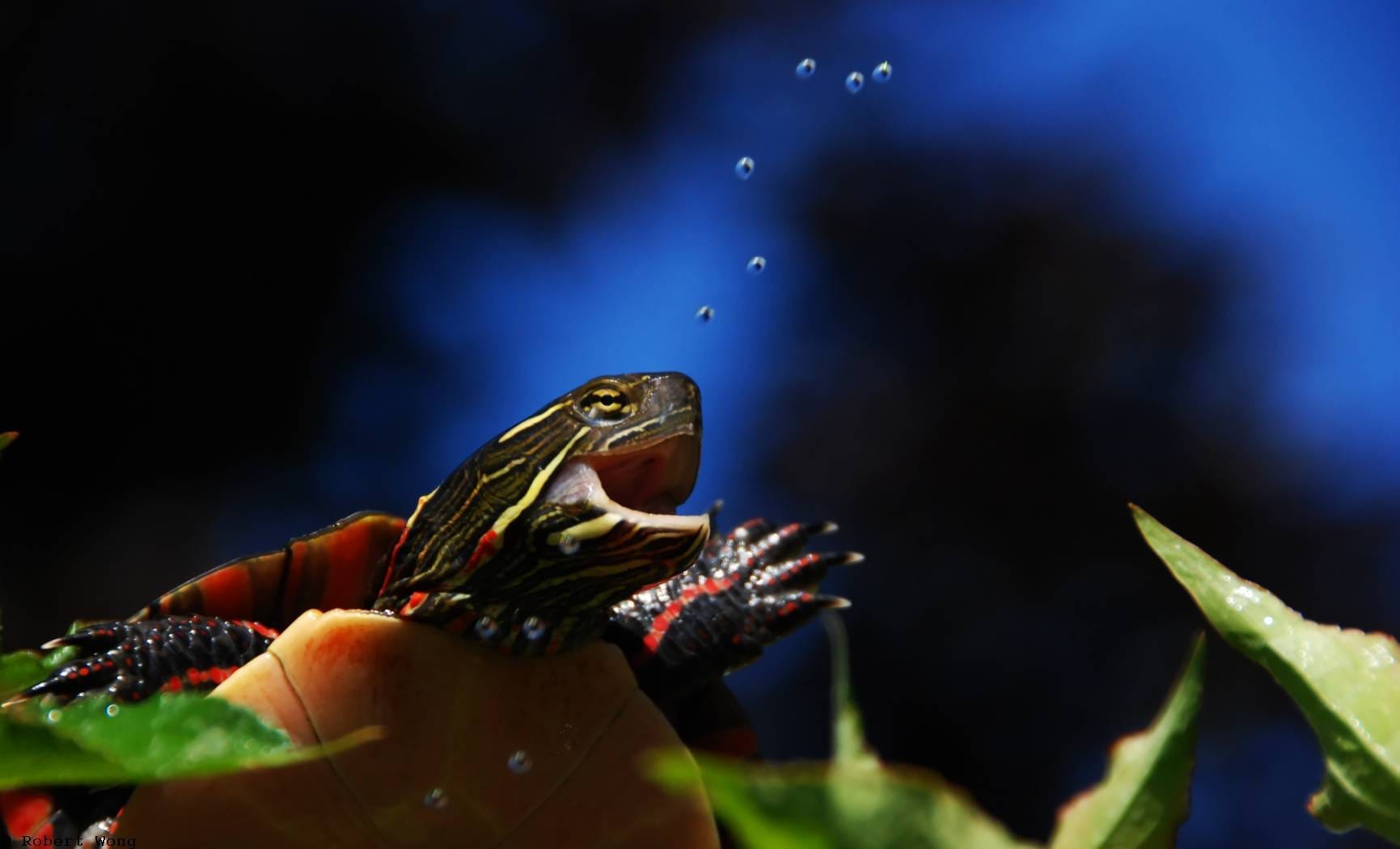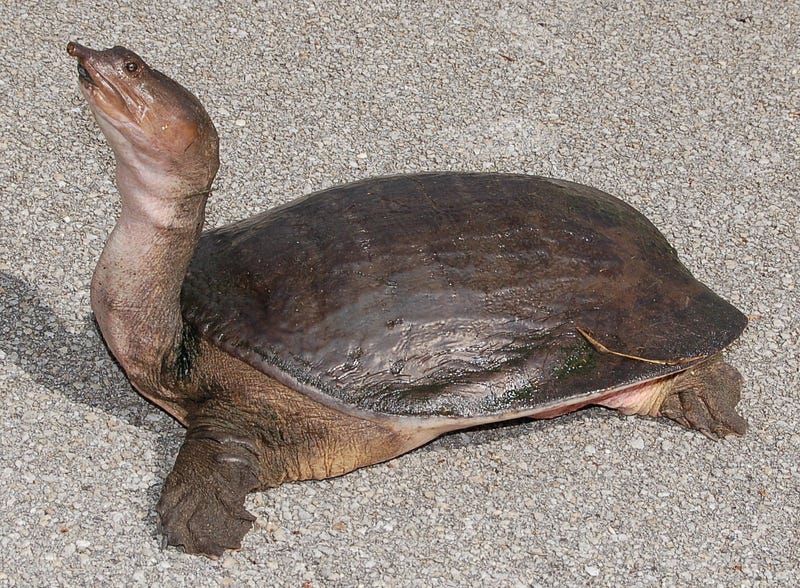
Unsurprisingly, all of the stories so far this Season have involved either mammals or birds. These are the groups of animals most associated with play behavior. They also contain the majority of species considered to possess high levels of overall intelligence (though there are always exceptions, such as with cephalopods as I mentioned before). Reptiles, on the other hand, are not known for their intellectual prowess. On average, their relative brain to body mass ratios are about 1/10th of that seen in mammals. Turtles in particular are not cognitive champions and I have personally observed plenty of cases of an individual turtle doing something unproductive or even dangerous. While admittedly only anecdotal in nature, there were several times during my research on sea turtles when I questioned the entire premise that females had the ability to locate optimal nest site locations.
But why would intelligence and problem solving matter so much when it comes to play? Let’s look again at some of the benefits of play behavior. Play can help young individuals train important skills for later use. It can also help cement social bonds. However, the majority of reptiles have no need for either of these things. Continuing with the example of sea turtles, the young individuals have no need to practice future behaviors. Everything they need is instinctual, already present in the brain and ready for recall and use. All animal development can be placed on a continuum between precocial and altricial young. The former are already mobile and able to survive shortly after birth or hatching, while the latter tend to be helpless, sometimes even blind and naked. Turtles fall on the extreme precocial end of the spectrum. They have no parents to teach them and, outside of mating times, they are not a group of highly social species.
So what benefit would a turtle or other reptile derive from play? This question brings us to the National Zoo in Washington D.C. and a turtle called Pigface. That may seem like a strange name for a turtle to some, but not to Floridians familiar with the Florida softshell turtle, Apalone ferox, and its long neck and tapered snout that it uses like a snorkel. Pigface was a relative of the Florida species known as a Nile softshell turtle, Trionyx triunguis. In his old age, he began a kind of self-mutilation behavior, clawing and biting himself and causing considerable harm. In an effort to reduce this distressing trend, his keepers introduced a variety of objects to his tank, including basketballs, sticks and plastic rings.

Pigface’s reaction to these had the desired effect of reducing his self-mutilation, but it also resembled a play-like behavior. It certainly emphasized the importance of enrichment activities to the zoo staff. In the video below, you can see the results of this with Pigface and other individuals at the zoo. Determining if these actions constitute play is difficult, especially because research in non-mammalian, non-avian play is still quite sparse. It is possible that these animals are simply exhibiting typical exploratory behavior (using its head and mouth to probe its surroundings) as opposed to actual play. However, it also exposes a delicate balancing act between a desire not to anthropomorphize an animal and a potential bias against deeming a behavior as play in a reptile compared to similar actions in mammal species.
Playtime by The Scientist, YouTube
That balancing act is a difficult one, and I am not going to dictate to you all how you should view it. Pigface died a few years ago, but considering he was around the same age as Myrtle, that’s hardly a surprise. Let’s take a look at another individual of the same species in a different zoo.
The Nile Softshell Turtle at Memphis zoo by darren pratt, YouTube
Is this turtle playing? Or merely exploring its environment the only way that it can? Does the answer really matter one way or the other? Again, I’m not going to answer those questions. Firstly, I’m not sure I can respond to them properly. However, I also realize that focusing on them is a way of making nature more clinical and less visceral. Instead, I want to leave you all with the images in those videos undiluted by my commentary. Enjoy them for what they are, an example of the beauty and variety of the natural world.
I hope you are continuing to enjoy Season 6. We’re beginning the drive towards the season climax now. As always, I would love to know what kinds of topics you’d like to see me cover in Season 7 and beyond. Feel free to respond to any of my stories you found particularly moving, inspiring, or interesting. I’m always looking to improve my storytelling and comments from readers are always welcome.